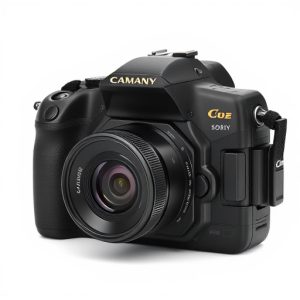Police Body Cameras: From Demand to Future Innovations
Police body cameras, available as a body camera for sale, have become a global tool for enhancing tr…….
Police body cameras, available as a body camera for sale, have become a global tool for enhancing transparency and accountability in law enforcement. With improved technology offering high-definition video, extended battery life, and stabilization, these devices capture incidents from the officer's perspective, aiding in de-escalating tense situations, internal investigations, and checking police conduct. Increasing demand driven by public safety and community trust has led to widespread adoption, despite challenges such as balancing transparency with privacy rights, ensuring robust video quality, managing data securely, and integrating camera usage into officers' duties without compromising effectiveness.
“In an era where transparency and accountability are paramount in law enforcement, police body cameras have emerged as a game-changer. This comprehensive guide delves into the world of these wearable surveillance devices, offering a detailed understanding of their functionality, growing demand (body camera for sale), and impact on modern policing. From enhancing public safety to presenting irrefutable evidence, we explore both the benefits and challenges of implementation. Furthermore, we gaze into the future, predicting technological advancements that will shape the evolution of police body cameras.”
Understanding Police Body Cameras: A Comprehensive Overview
Police body cameras, also known as wearable cameras or dashboard cameras, are small, portable devices designed to capture video and audio during police interactions. These cameras have become an increasingly popular tool for law enforcement agencies worldwide due to their potential to enhance transparency, accountability, and public safety. By providing real-time visual evidence, they offer a comprehensive overview of police activities, ensuring that both officers and citizens are protected.
With advancements in technology, body cameras for sale now boast improved features such as high-definition video, long battery life, and advanced stabilization to ensure clear and stable footage. They are typically worn on an officer’s uniform or equipment, capturing incidents from their perspective. This innovative approach allows for a more accurate documentation of police conduct, facilitates better investigation processes, and serves as a powerful tool for community policing.
The Rise in Demand for Body Cameras for Sale
The demand for body cameras has skyrocketed in recent years, with more and more law enforcement agencies recognizing their value as a tool for transparency and accountability. This surge in demand is largely driven by the need for effective public safety measures and the desire to foster trust between police forces and communities they serve. With the increasing availability of body camera for sale, departments can equip their officers with this technology, allowing for real-time video documentation of interactions during patrols and incidents.
The rise in popularity highlights a growing understanding that body-worn cameras provide an objective record of events, which can be invaluable in de-escalating tense situations, providing evidence for internal investigations, and serving as a check on police conduct. As technology advances, these devices become more accessible and affordable, making it easier for law enforcement to adopt them across the board and ensure fair and transparent policing practices.
Benefits and Challenges of Implementing Body Cameras in Law Enforcement
The implementation of police body cameras has sparked both enthusiasm and debate in the law enforcement community and among the public. One of the primary benefits is enhanced accountability; these devices provide a tangible record of interactions between officers and citizens, fostering transparency and potentially reducing instances of misconduct or excessive force. Body-worn cameras also serve as powerful tools for training purposes, offering detailed insights into real-life policing scenarios that can be analyzed to improve tactics and strategies. For departments looking to acquire body cameras, there is a wide range of options available on the market to suit different budgets and specific needs, making it easier than ever for law enforcement agencies to incorporate this technology.
However, challenges exist when integrating body cameras into police practices. Privacy concerns top the list, as these devices capture intimate details of interactions that may not always be relevant to an investigation or case. Balancing the need for transparency with individual privacy rights is a delicate task. Additionally, there are technical hurdles to consider, such as ensuring reliable video quality in varying environments and maintaining secure storage and transmission of vast amounts of data generated by these devices. Training officers to use body cameras effectively while also focusing on their primary duties can be another challenge, requiring dedicated resources and time for successful implementation.


